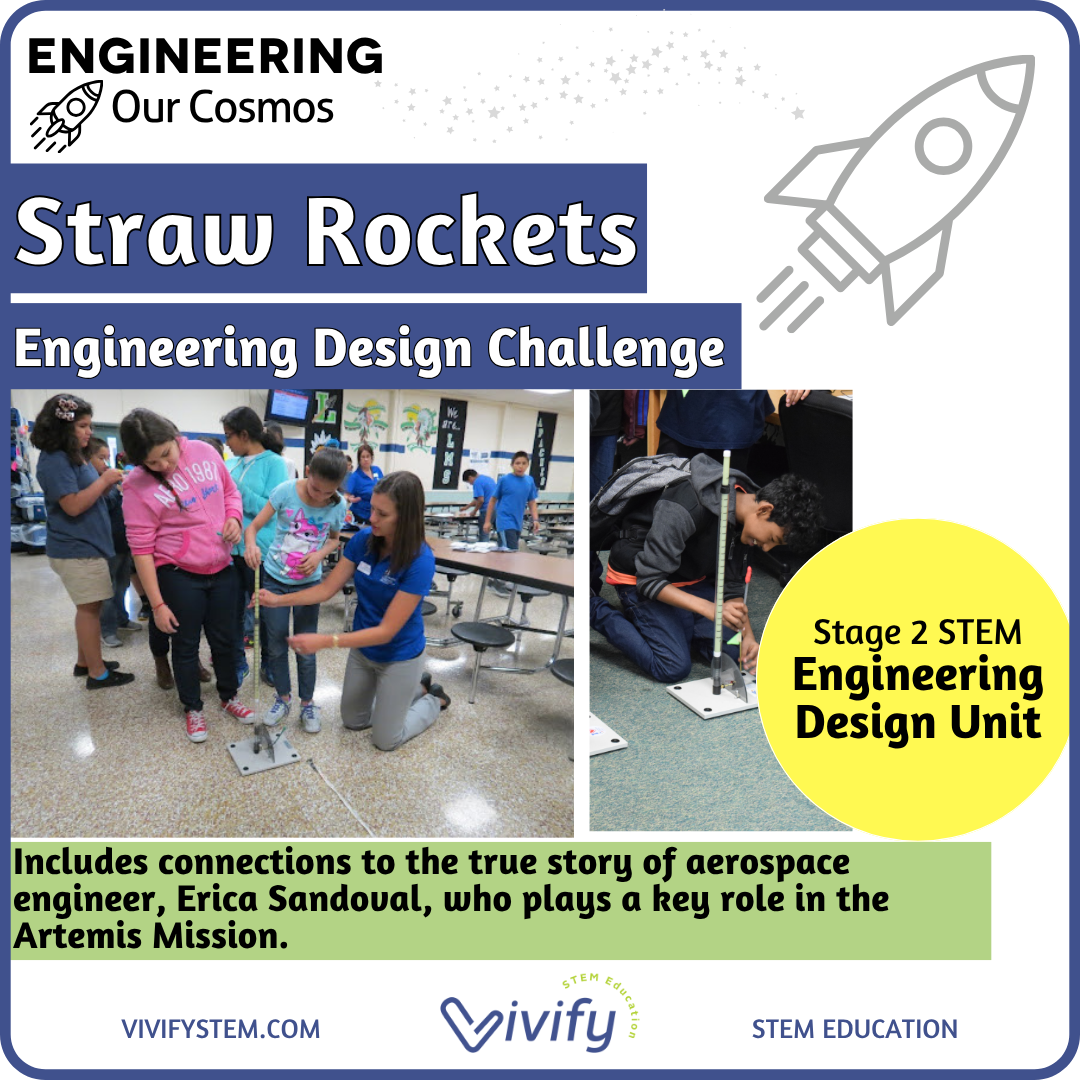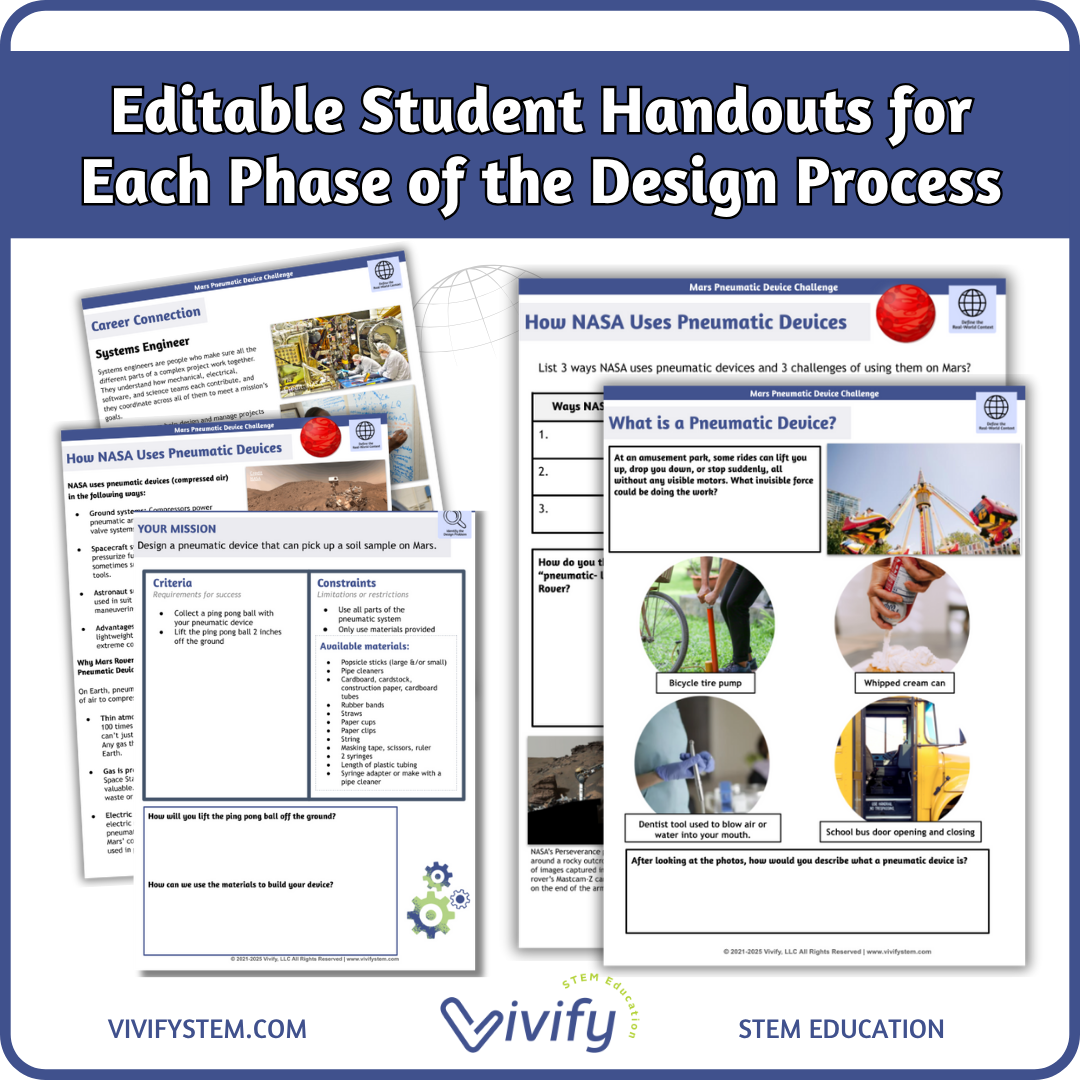“This resource made it easy to plan and implement hands-on STEM lessons with my students.”
Lesson Overview
Inspired by NASA’s Space Launch System and aerospace engineer, Erica Sandoval, this STEM unit invites students into the exciting world of rocketry. In a hands-on engineering challenge, students design, build, and launch straw rockets to explore how variables such as fin shape, nose cone size, and launch angle affect rocket performance.
Using a Pitsco launcher and common classroom materials, students aim to maximize distance traveled while experimenting with design optimizations. They also investigate and apply science concepts including Newton’s Third Law of Motion along with the forces of thrust, drag, and lift. By collecting and analyzing quantitative data, students refine their designs and make evidence-based improvements, similar to the iterative testing process used by NASA engineers. Along the way, students connect their classroom learning to real-world careers and technologies, discovering how engineering shapes space exploration and our daily lives.
Engineering Our Cosmos Storyline (Adaptable for Grades 6 - 8): Humanity has long looked to the stars with wonder. Now, we stand at the dawn of a new era, where engineers will lead the way to other worlds. Your mission: design the tools, technologies, and systems that enable human exploration and survival beyond Earth. Each challenge brings us closer to life among the stars—and drives innovations that improve life here on Earth. It’s time to start Engineering Our Cosmos!
A Mission to Launch Rockets: In this unit, students will learn about aerospace engineer Erica Sandoval and her work on NASA’s Artemis missions. Erica’s path started in fashion. She was fascinated by “clothing assembly” and how things are built. That interest grew into a love for mechanical engineering, which eventually led her into one of the fastest-growing fields: aerospace engineering.
Today, Erica is a Program Manager at Northrop Grumman in Magna, Utah. Her job involves careful testing to make sure each motor meets strict safety, quality, and technical standards. Erica was part of the team from the very first test, working to ensure the system can protect astronauts during NASA’s Artemis missions.
Engineering Learning Goals in this unit include:
Real-World Connections: Explore how NASA’s newest rocket, the SLS rocket will bring astronauts to the Moon and about the career of aerospace engineer.
Making: Build a functioning straw rocket model using common materials.
Habits of Mind: Define the criteria and constraints of the engineering problem, use data and research to inform design decisions, and evaluate design performance and identify design improvements.
Science: Analyze and describe the forces acting on a rocket, explain the application of Newton’s Third Law of Motion to rocket propulsion, and explore the impact of fin shape, nose cone size, and launch angle on rocket performance.
Technology: Explore the stages of a rocket launch and compare how rocket technologies have changed over time.
Math: Collect quantitative testing data such as mass of nose cone and angle of launch and graph and analyze data to inform design decisions.
Included in this product:
Aligned to: NGSS, TEKS, and ITEEA Standards
Complete Teacher Guide following the engineering design process
Materials list and activity suggestions
Editable teaching slides
Editable student handouts for each phase of the design process, including science background, STEM career connection, information on Erica Sandoval, and more!
Mission report and badges
Recommended Supplies per Student:
3 Straws
1 inch Modeling Clay
3 Index Cards
Scissors
Clear tape
Target or measuring tape for testing
2021 Science TEKS Standards Alignment (Texas)
Practices: 6.1A-F, 6.2D; 7.1A-F, 7.2D;, 8.1A-F, 8.2D
Content: 7.7A-B, 8.6C, 8.7A
























